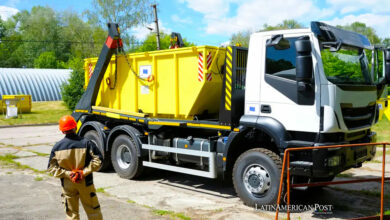An ageless war: this is the reality of child recruitment in Colombia
"By persuasion and coercion, guerrilla and paramilitary groups strengthened their armies with minors", says the National Center for Historical Memory

A revealing report published by the National Center of Historical Memory in Colombia showed that in the last 5 decades a total of 16,879 children and adolescents were recruited by guerrilla and paramilitary groups to their ranks and fight against the authorities during the time greater conflict in the South American country.
The report is titled 'Una guerra sin edad' ('An ageless war') and its 684 pages published recruitment methods used and primarily responsible for the scourge. This X – Ray comes amid political dialogue between the government and groups such as the FARC and ELN, exhibits involving these insurgent organizations had regarding the 'enlistment' child from the 60s until 2016.
According to the results thrown by the study, the former guerrilla movement FARC and now political party was the group most reclutaciones carried out during the 50 years observed with 54% of all children included, followed by paramilitaries with 24% ELN and 10%.
According to the study, between 1997 and 2005 was the time of more intensified recruitment of children in the country, with a total of 9,199 children associated with rebel groups. This timing coincides with the intensification of the armed conflict in Colombia and plans taken by the state to fight the insurgency. Also it agrees with the period when Rodrigo Londoño alias 'Timoshenko', former leader of the FARC and now candidate for president of Colombia, served as chief of staff and head of the armed muscle strengthening of the criminal organization.
During these eight years (1997 – 2005), the FARC joined their ranks 45% of 9,199 children recruited as part of a plan to create new blocks in Cundinamarca and Magdalena Medio and increase the number of fighters in his army. Paramilitaries continued terrorist group recruiting 43% lower and the remaining 12% would have been led to the ELN or is in the range of unquantifiable.
Between persuasion and coercion
Insurgent groups trying to rid responsibilities by stating that "nobody in their ranks is against their will." Even the ELN has said that forcing people to belong to their organization is counterproductive and can become a debilitating factor. However, their recruitment and indoctrination tactics become lethal weapons against vulnerable populations.
According to the report, most children recruited are not linked to the insurgents to force groups. 40% of children had entered in the form of persuasion, 11% under duress and the remaining 49% no precise information is known.
In the form of persuasion, children are indoctrinated or are offered something for joining their illegal activity. In the case of the paramilitaries, sums of money for "work" are offered. As for the guerrillas, this practice is evidenced when it is offered to the child or family, education, food, and "better conditions" of life for belonging to particular group.
Instead coercion takes practice when minors are recruited because families can not afford loans 'drip' (in the case of the paramilitaries) or fail to deliver war fees charged by the guerrilla.
One day for training is enough
In the 56 years of conflict studied by the Center for Historical Memory, 71% of the recruited have been boys, 26% girls, and there is no known specific information about the remaining 3%. In the ranks men and women can take up arms and belong to the frontlines, but are mostly children who fulfill these functions.
As the study highlights, girls are linked to a greater volume to the guerrillas, where they can fulfill management functions of money, food, community outreach, new recruitments, information work and sexual favors.
Underage recruits go through training 'schools' where in just one day can be taught to perform functions. This happens especially with paramilitary groups, who with the delivery of child and weapon use and subsequent instruction can start to 'work'. Meanwhile the guerrillas can count on training to recruited children ranging from three to five months.
'Una guerra sin edad' becomes the most complete picture of the use of children in armed conflict in Colombia. Although there are still many uncertainties about the exact number of children, the reasons and methods which were linked to the armed groups, can highlight, as manifested adviser at the Center for Historical Memory, María Emma Wills, that "All legal or illegal armies know, the younger is the more recruits learn to obey, most profitable are your vulnerabilities. "
Latin American Post | Krishna Jaramillo
Translated from "Una guerra sin edad: así ha sido el reclutamiento de niños en Colombia"





